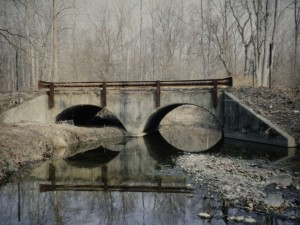In the 1990s effort to evaluate bridges for scour-related concerns, a 3-tier approach was generally recognized by most participating entities. The 3 tiers were labeled as Level I, Level II, and Level III. Level I investigations used qualitative analyses of stream characteristics, bridge characteristics, and geomorphic concepts to prioritize bridge-scour concerns within a given geographic region. Level I investigations typically included a large number of bridges (sometimes in the 1000s) and attempted to identify those bridges with existing scour symptoms and those which warranted further investigation.
Advantages of Level I Investigations:
- Rapid assessment of numerous bridges evaluating:
- Stream characteristics
- Bridge characteristics
- Geomorphic stability of the channel
Level II investigations applied hydrologic, hydraulic, and sediment transport concepts to produce quantitative scour-depth estimates for a limited number of scour-critical bridges. Level III analysis involved mathematical and physical modeling studies.
